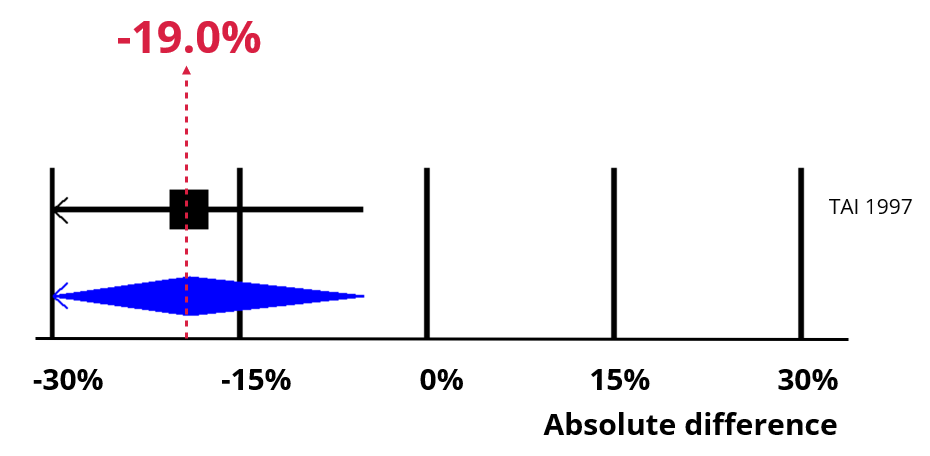Instead of receiving a postal reminder, participants receive a telephone call to remind them to participate.
Telephone reminders compared to postal reminders, may result in a large decrease in retention.
A decrease of -19% (95% confidence interval = -33% to -5%).
GRADE Low certainty.
We recommend that trialists use telephone reminders to replace postal reminders only in the context of an intervention evaluation.
See Resource bundle below for support materials.
Imagine initial retention is 65% of those approached. You have a trial with 100 participants that needs responses from 80 to meet its statistical power calculations. Retention of 65% means that you will be 15 responses short (see chart below).

Now imagine using telephone reminders instead of postal reminders. The chart below shows the impact of an absolute increase of -19% (95% CI = -33% to -5%). Retention is now 46%, which means our best estimate is that you would now be 34 responses short.


Trial Forge will make trials more efficient by looking for marginal gains across all trial processes, from research question to implementation into routine care. It will encourage everyone connected with trials to be more sceptical of what we do by asking for the evidence behind all of our trial decisions.